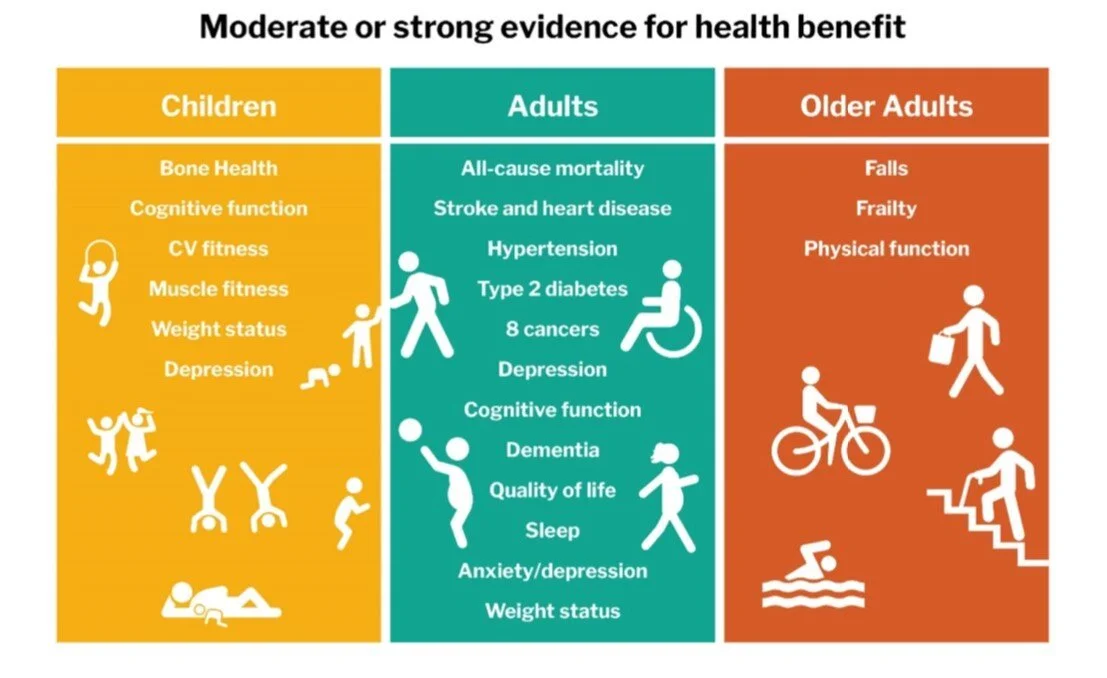What can an extra 10 minutes of walking do for you?
"If physical activity were a drug, we would refer to it as a miracle cure, due to the great many illnesses it can prevent and help treat.”
- UK Chief Medical Officers 2019
The evidence for the impact of physical activity on health is compelling and the breadth of the impact is becoming clearer over time. The UK guidelines for Physical Activity were updated in 2019, and emphasised the fact that even small increases in physical activity can make a notable difference to health.
We all know about the long-term benefits of physical activity for our health, but this is often not what we are thinking about in our day-to-day lives, which may be busy with work, commuting, deadlines and being with our families. So often, taking note of the immediate benefits of introducing a new activity can be more motivating.
In my clinical practice as a physiotherapist, clients who I work with often tell me of the immediate benefits they feel from adding a little extra walking to their daily routine. People often say that their mood is boosted straight away by going for a walk and they can concentrate better afterwards. People often also notice improvements in sleep. This all fits with current research about physical activity.
Gregory Panza and his colleagues at The University of Connecticut monitored physical activity levels and mood in 419 people for 4 days. They found that light physical activity such as walking led to increases in subjective wellbeing. This increase in wellbeing was greatest in those people who were otherwise quite sedentary.
However active or inactive you already are, I encourage you to add 10 minutes of walking to your day and see what differences you notice in your life.
The following summarises all the health benefits with moderate or strong research evidence:
UK Chief Medical Officers Physical Activity Guidelines 2019
UK Chief Medical Officers Physical Activity Guidelines 2019
Here are some tips for success:
Have a consistent habit. Aim to walk at the same time each day.
Make it easy! Choose a time that fits into your day, e.g. walk for 5 minutes as part of your commute at the start and end of the day or have a 10-minute walk in your lunchbreak.
If you are meeting a friend or colleague, can you include a 5-10-minute walk during the time you plan to meet.
Think about any practical barriers e.g. having the right shoes readily accessible.
Make it enjoyable! If possible, try to walk in an environment which you would look forward to walking in.
Involve a friend, family member or colleague. Decide a time that you will walk with someone else and encourage each other.
If you have a chronic health condition or injury which means that walking for 10minutes is not possible, but you could walk or do a different light activity for a shorter period, then start with a shorter time. If this goes well, and you don’t experience setbacks, then increase the time by 20% every 1-2 weeks. I do recommend getting some more specific guidance from a health professional if you have a chronic health condition.
Write down the benefits you will anticipate experiencing when you start adding 10 minutes extra walking to your day.
Good luck!
Please note, if you have a medical condition or injury, please consult a health professional to check this is safe for your to do and for more specific guidance.

